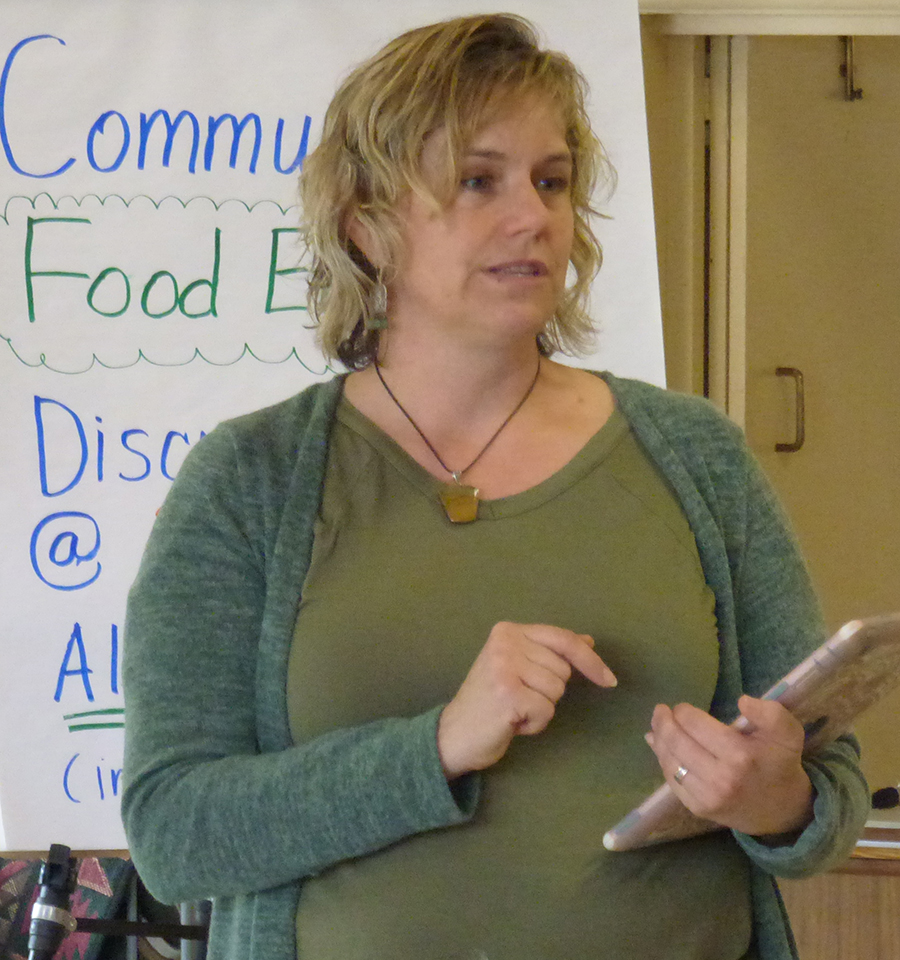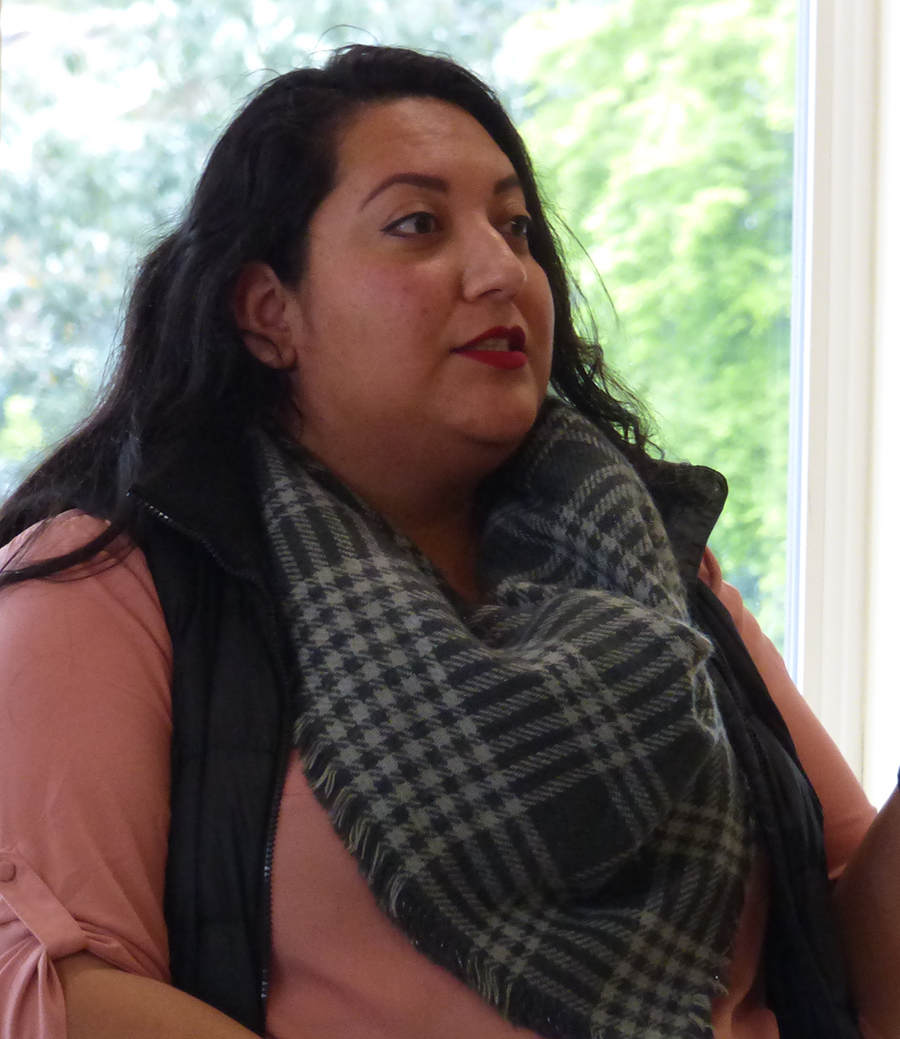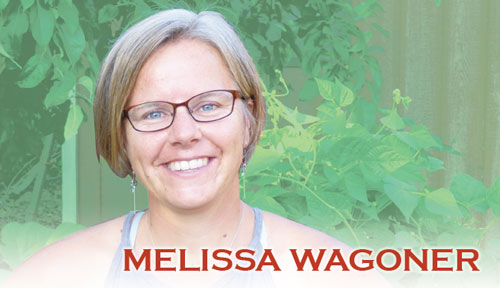By Melissa Wagoner
Food is necessary for the survival of all humans but that doesn’t mean access to it is always equitable.
In fact, every month within Marion and Polk Counties more than 45,000 individuals – 15,000 of them children – rely on food assistance according to Marion Polk Food Share (MPFS), an organization of which Silverton Area Community Aid (SACA) is a part.
“I grew up in this town and I love it,” Sarah DeSantis, SACA’s executive director, said in an introductory statement at the recent local food equity discussion. “I also believe all people should have enough food to eat.”
It’s a mission SACA has been striving toward since its inception in 1950. It’s also one the Silverton Food Coop has adopted.

The coop group hosted the food equity discussion.
“We recently put equity in the center of our mission and values,” Coop Board Director Beth Myers-Shenai said. “But we have no particular way we are driving that mission until we hear from the community.”
So the coop pulled together the food equity discussion, and invited in a five-person panel. Along with DeSantis, the panel included Anabel Hernández-Mejía from the Farmworker Housing Development Corporation; Jordan Uth, owner of Olde Moon Farm; John Friedrick, pastor of Oak Street Church and Kayla Burdine, executive director of Sheltering Silverton.
Burdine began the conversation by offering a definition of the term food equity as it affects her clientele.
“I think food equity is availability, access and preference,” Burdine began. Adding that, while there is often much energy put toward improving the first two – access and availability – very little, if any, is put toward the last – preference.

It is a factor that should take into account not only the health concerns and dietary needs of the houseless community but the cultural differences within it as well.
“A lot of the time when our clients come in, they won’t take the food we have,” Burdine pointed out. “And I can only think it’s because it isn’t their preference.”
It’s a phenomenon Hernández-Mejía, the communications and advocacy coordinator for the Farmworker Housing Development Corporation, has observed within her own clientele as well. Her organization manages properties throughout Oregon, including the Colonia Jardines property in Silverton.
“I work with mostly farmworkers – Latin Americans are our majority,” Hernández-Mejía confirmed, explaining that, because of cultural difference, many of the canned and boxed food items commonly found on local food pantry shelves are not familiar ingredients.
But some change may be on the horizon. Anahuac, an organization based in Woodburn, strives to support indigenous communities through education in agriculture, the culinary and cultural arts, overall wellness and native languages.
“The focus has been taking things back to where they’re culturally relevant,” Hernández-Mejía explained. “Bringing the community together…being proud of our identity and bringing it back to the earth.”
It’s a mission Uth, as the owner of a small, family farm, identifies with, albeit under slightly different terms.
“Working with the earth is where we all belong,” she said, recognizing the connection between humans and the earth no longer exists for so many in the community whose only knowledge of food comes from shopping in a store.
“We’re in the Willamette Valley but most of [what’s grown] is inedible,” she continued, evoking fields of grass seed, nursery plants and Christmas trees as her example. “It’s a food desert.”
That, too, may be evolving as organizations like MPFS, increase their support of small, local farms.
“I’m super stoked at what MPFS has done because they created a program to buy from small farms for their clients,” Uth said. The partnership supports farmers while increasing the health benefits of the food it distributes to pantries county-wide.
“It gives us an opportunity to wholesale something…At a lower cost, yes, but if farmers wanted to have a farm and be a farmer for the Foodshare, that’s an outlet.”
It’s a difference SACA is already seeing.
“I think Silverton does a pretty great job,” DeSantis confirmed. “Our community supports us; we have a partnership with Roth’s and Safeway…and we have farmers that have set aside land – or even home gardeners.”
The question remains, however, is it the variety of food the community needs?
“One of our residents mentioned that, to get Mexican food, they would drive to Woodburn because of the limits here,” Hernández-Mejía said.
Her example illustrated the point that without directly polling the community, it is impossible to know what ingredients are missing and, beyond that, if those missing ingredients contribute to the absence of the Latinx community from food assistance programs entirely.
It’s a notion that appeared to hit home with Pastor John Friedrick. His church has served thousands of community meals in the past 14 years.
“There are no Latinx people that come to our meals. Is that because we make white people food? And who else isn’t showing up? Who do we need to invite in?” he asked.
It was a question facilitator Christine Moses – an equity and inclusion consultant with Buffalo Cloud Consulting – presented in another way.
Looking out at an audience that was predominantly middle-aged and white, “Who’s missing from this room today?” she asked. “Our end users need to be here too. Because the answer’s in the room…if we have the right people in the room.”
What is food equity?
The group defined food equity as meaning all people have convenient, affordable access to food that is…
• Abundant
• Fresh
• Nourishing
• Delicious
• Varied
• Appropriate for those with special dietary requirements
• Culturally relevant
• Supportive of small, local farms
• Produced in a way good for the earth
• Furthers community relationships
